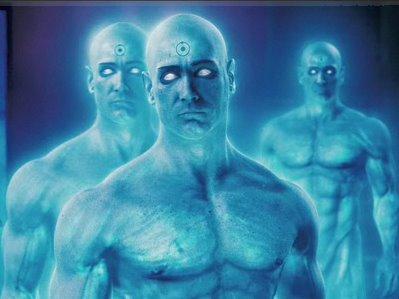
One of my favorite hobbies has been immersing myself in superheroes. Whether it was reading comics, watching cartoons, watching movies, or drawing pictures of them, I love the idea of superheroes. To me, they not only provided entertainment, but also taught me good values like respect, selflessness, and virtue at a young age. In what ways have they influenced you?
I believe superheroes also had a profound effect on our generation by allowing us to dream about possibilities. Many of us who have watched Superman, Spiderman, Green Lantern, or The Flash have dreamed about one day performing the amazing feats that they can do with their abilities. Our closest means to achieving such powers is science. Are these powers too much science fiction or do they actually have some plausible basis? In this post, I will talk about a few popular superheroes and ponder how their powers relate to real science.
Magneto

Magneto (from the X-Men) has the ability to control metal, which he does so by manipulating magnetic fields. In physics, we know that magnetic fields are created by moving charges. The most familiar form of moving charges is that of current in a wire, after all current is nothing but charges moving in specific direction. You may not have realized this, but when current flows through a wire, a magnetic field is generated around the wire. If you take your right hand, stick your thumb in the direction of the current, and wrap your fingers around the wire, the wrapping of your fingers corresponds to the direction of the magnetic field that is generated. This is called the right hand rule.

It is therefore plausible to presume that Magneto’s real power is his ability to control how electrons and charges flow in a nearby vicinity in order to create the magnetic fields he needs to control metal. However, I do not believe he can control individual electrons because in Quantum Mechanics, there is a rule called the Heisenberg Uncertainty principle that prevents you from knowing simultaneously the exact position and momentum of a subatomic particle.
Magneto also wears a helmet to protect himself from telepaths like Professor X, who reads minds via electromagnetic waves. His helmet is most likely that of a Farady Cage, which in physics is a grounded conductive cage that shields objects inside the cage from electromagnetic waves coming from the outside. In principle, this would shield him from Professor X’s electromagnetic mind-reading abilities thereby protecting his thoughts.
Iceman
_0001.jpg)
In one X-Men comic, I remember the characters were talking about how Iceman’s abilities worked, though he himself was not very interested. It turns out that Iceman does not magically shoot blocks of fully formed ice from his body. What he does is control the local temperature to make it cold enough the freeze the nearby water vapor in the area. What he really controls is cold temperature, which also makes his ability to survive in a frozen body more believable.
Pyro
.png)
Pyro, like Iceman, does not magically shoot fire out of his body. In the second X-Men movie, he revealed that the reason he carries a lighter with him is because he cannot create a flame, but manipulate it. A flame needs fuel to burn and an oxidizer in order to survive. Hydrogen is a good fuel, Oxygen is a good oxidizer, and both are abundant. Pyro’s real ability is therefore controlling the Hydrogen and Oxygen concentration in a nearby area which he then uses his lighter to burn creating massive flames. For those who are familiar with the anime Full Metal Alchemist, Roy Mustang also has a similar ability, but he uses ignition gloves instead of a lighter to burn the Hydrogen and Oxygen.
Spiderman

Most of Spiderman’s abilities require changing the genetic makeup of his organs, or even creating new organs that carry out these powers. For example, (in the movie) when his body creates his own webbing, there needs to be a special organ that can produce that substance. Subsequently, there needs to be an alteration of his wrist muscles so that they provide enough pressure to shoot the webbing out of his body. His muscles need to be altered for his super strength, his body needs to have tiny microscopic hairs protruding which allows him to stick on walls. His wall crawling ability is a result of the Van Der Waals forces (small intermolecular forces between neutral atoms, sometimes attractive) between the tiny hairs and the wall surface. This is how geckos stick to walls.
All of this requires changing the DNA of some of the cells in his body. HIV is a virus that penetrates the human body and changes the genetic information of cells. It would take an HIV-like virus that is biologically engineered to invade Peter Parker’s cells and change their DNA in order to turn his ordinary organs into spider-powered ones. In the first Spiderman movie, we see Peter Parker undergoing a terrible fever after he is bitten, most likely due to his body recognizing foreign intruders and attempting to rid his body of it.
Dr. Manhattan

Dr. Manhattan, from the Watchmen series, is a quantum superhero. His ability is to control the quantum mechanical nature of objects. In my previous post, I talked about the nature of waves, particles, and the wave-particle duality found in subatomic particles. Dr. Manhattan is a macroscopic (one that we can see in our “world” unlike the quantum world) quantum object. He is the wave-particle duality itself, controlling both the wave and particle nature of objects. In the movie, we see him teleport himself to Mars. He does this by extending the wave nature of the atoms in his body all the way to Mars, which then turn back into particles, without ever actually having to move the particles across space themselves. The probability of this happening for any ordinary object is finite, but extremely unlikely. But since Dr. Manhattan has control over quantum effects, he can make this happen.
In the picture above, we can also see that there are multiple copies of Dr. Manhattan. The reason he can do this also has to do with Quantum Mechanics, because QM also says that a particle can be in multiple states at once until we actually try to observe it. Here, Dr. Manhattan is exploiting this principle, thus allowing himself to appear in multiple locations at once.
There are far too many superheroes to talk about and I apologize for leaving out any. Perhaps I may continue this discussion in another post. If there are any interesting ones that you would like to talk about, please mention them below in the comments section! Check out two links below to the radio program StarTalk Radio, hosted by Dr. Neil deGrasse Tyson, on the physics of superheroes where he interviews Professor James Kakalios, author of The Physics of Superheroes. Those of you who like this topic may find that conversation quite interesting.
AUDIO: StarTalkRadio The Physics of Superheroes 1 & 2
The Physics of Superheroes
The Physics of Superheroes Sequel
VIDEO: Dr. Manhattan Teleports

